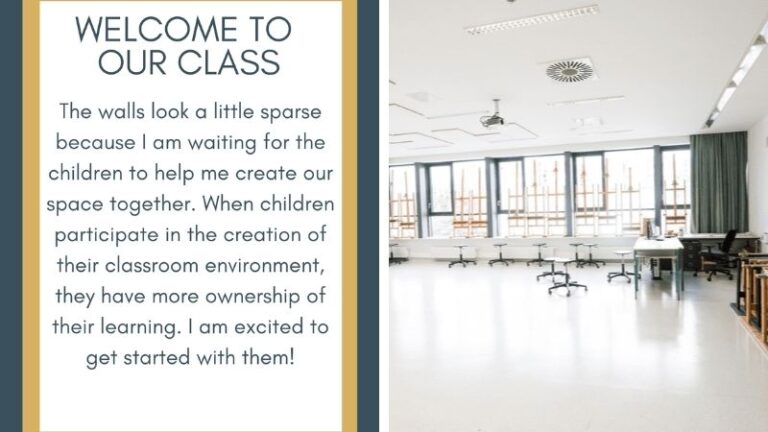We’ve all walked by or seen pictures of that picture-perfect classroom. You know the one I’m talking about. The classroom that is plastered with gorgeous posters, detailed time-lines, impeccable organization, and anchor charts of every kind. Some might even call them over decorated classrooms.
When I first see a classroom like this, I immediately feel like I’m lacking as a teacher. But then I think—wait a minute. I’m a good educator. I have color-coded shelves and hundreds of egg cartons stashed in my basement. So who cares if my classroom doesn’t classroom look like this?
For years, I’ve been told I need to get on the anchor chart bandwagon. “You should go see this teacher’s room to get some ideas!”
It soon became apparent to me that in most cases, anchor charts serve outsiders looking in, not necessarily my students. And that’s when I starting loathing the anchor chart movement in general.
Why should I have a Pinterest-perfect and Etsy-fied classroom?
What students see in their classroom line-of-sight should be a carefully orchestrated mix of curriculum, directives, posters and artifacts. As I say to my students, “A number-line will not get you an answer. You must know how to use it first.”
So here are the reasons I boycott anchor charts. Of course, this is one of those areas of education where I have to say—to each their own. But if you’re like me and dislike the blanket requirement of making classrooms pretty instead of educational, then you might understand where I’m coming from.
Kids are already overstimulated
In our screen filled world, children and adults alike are bombarded with visual stimuli. The more there is to see, the less students stay engaged. (Seriously—this study from Carnegie Mellon University talks about how disruptive decorations can be.) Young students should not be expected to evaluate a plethora of visual information and then discriminate which is important. Listening and participating, remembering to raise a quiet hand, and not eating pencils can sometimes be enough (at least it is for my K5 classroom).
[contextly_sidebar id=”cQpCks6tllUC6eX3jsQZvWRJ0Mr0OCh3″]
Students learn in different ways
With an eye toward full inclusion, special education students are in classrooms more and more every day. That is best practice and benefits all students. But students with special needs become distracted more often. Diminished participation and off-task behavior can increase with so much more in their field of view. In my experience, younger students gain less assistance from classroom print than engaging instruction with verbal cueing.
Pretty doesn’t make learning happen
A Pinterest-perfect classroom feels inviting to families and tours. It promotes positive memories of personal education experiences and elicits favorable feelings of effectiveness. Posters and charts are concrete items that display the amount of completed work or discussed ideas. Graphic organizers and artifacts provide administrators with a visual representation of work and classroom culture during observations; a necessary part of education and accountability. But the Pinterest-perfect classroom requires time, presentation worthy handwriting, or lots of money (for those un-crafty educators).
It can distract us as educators
I’ve been in many Pinterest-perfect classrooms and they do look amazing! And those teachers seem to thrive there. Anchor charts and excess stuff just doesn’t work for me. I get distracted. Easily. Visual noise is distracting and makes me uncomfortable. Teachers model each of these at different times, but we tend to revert to the mix that supports our personal best. We need to be successful if our students are to succeed. Plus we can easily get wrapped up in creating something visually appealing, which can take away from more important goals overall.
The things teachers put on classroom walls are a reflection of educational philosophy, curriculum necessity, state and federal mandate, and personal preference. We all want what’s best for students. Sometimes we get to choose and other times we must comply. Anchor charts? They are wonderful example of work and knowledge. Putting it on display? You have to ask yourself, “Does this work for me?”
What are your thoughts, teachers? Are you an anchor chart fan or foe? Please share in the comments.

